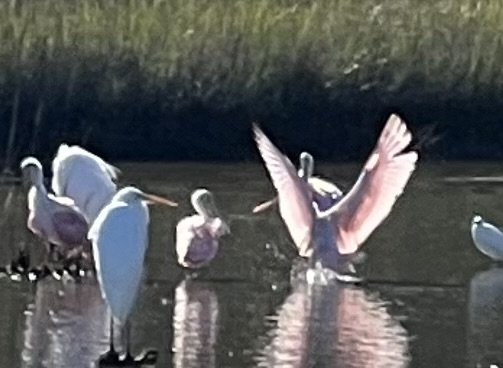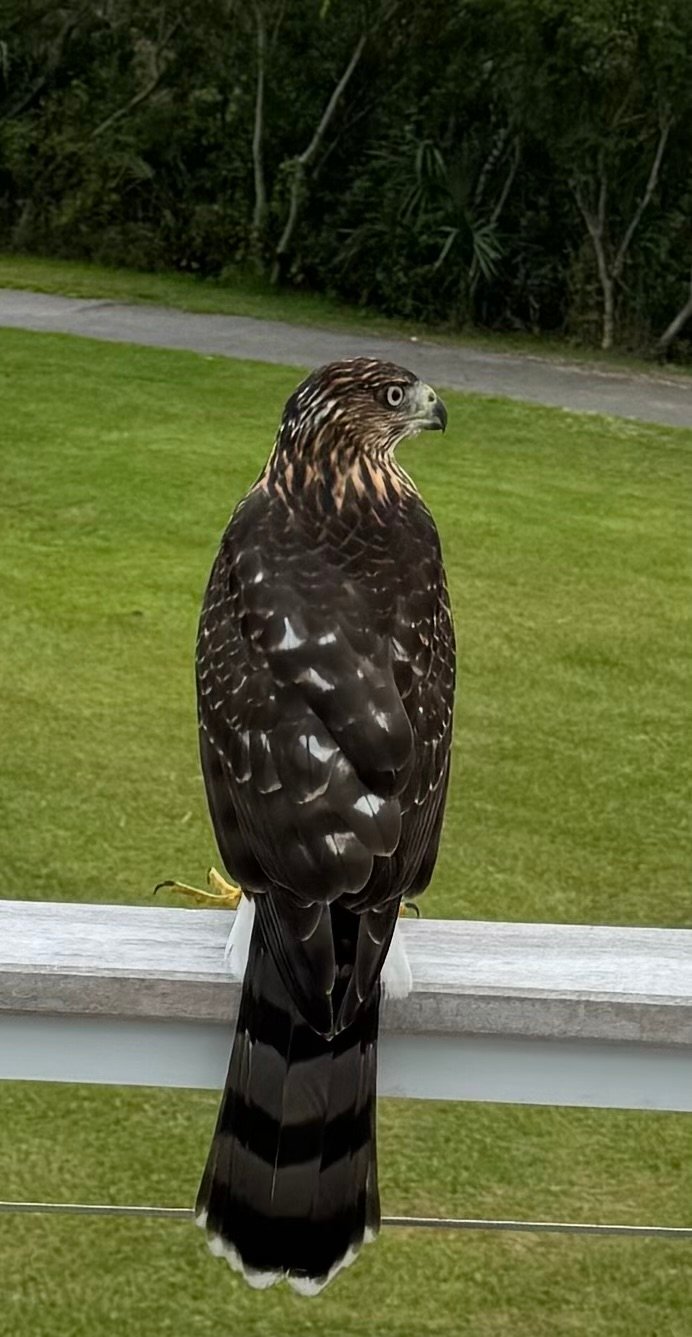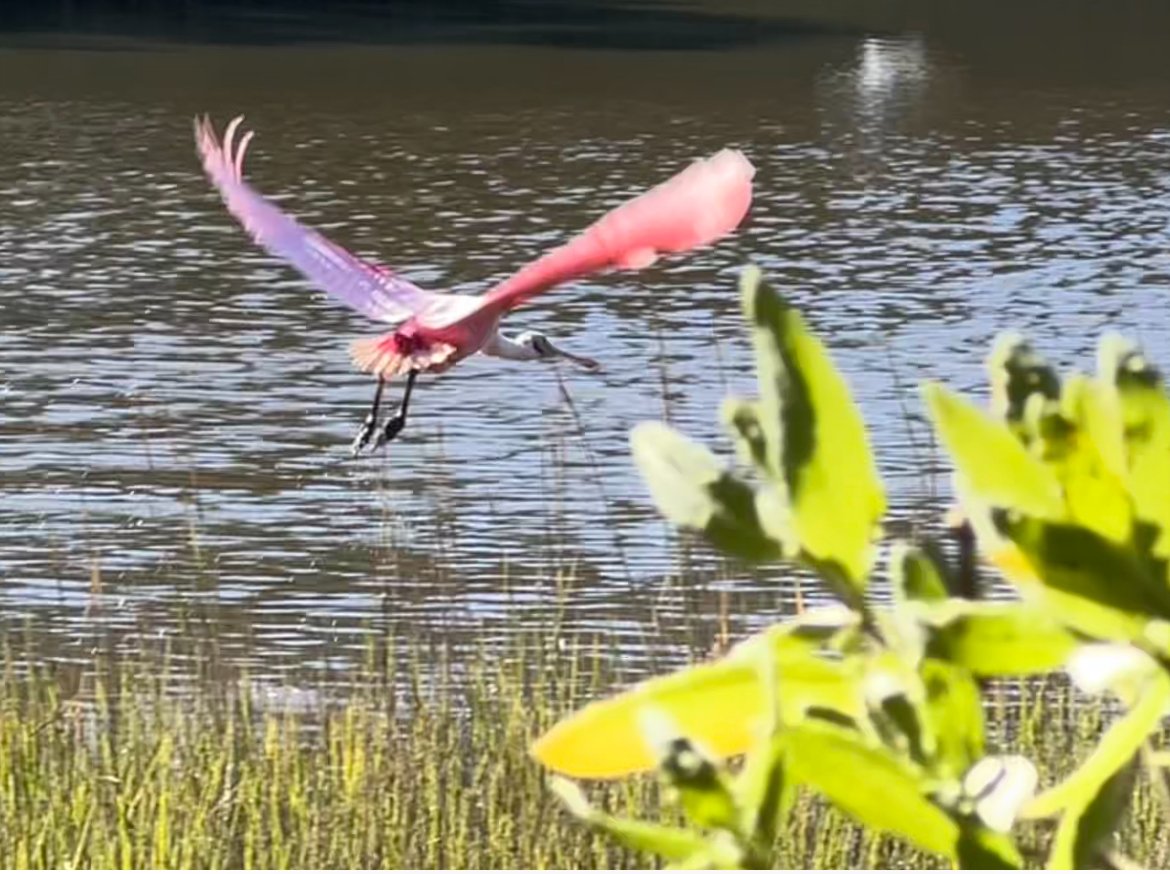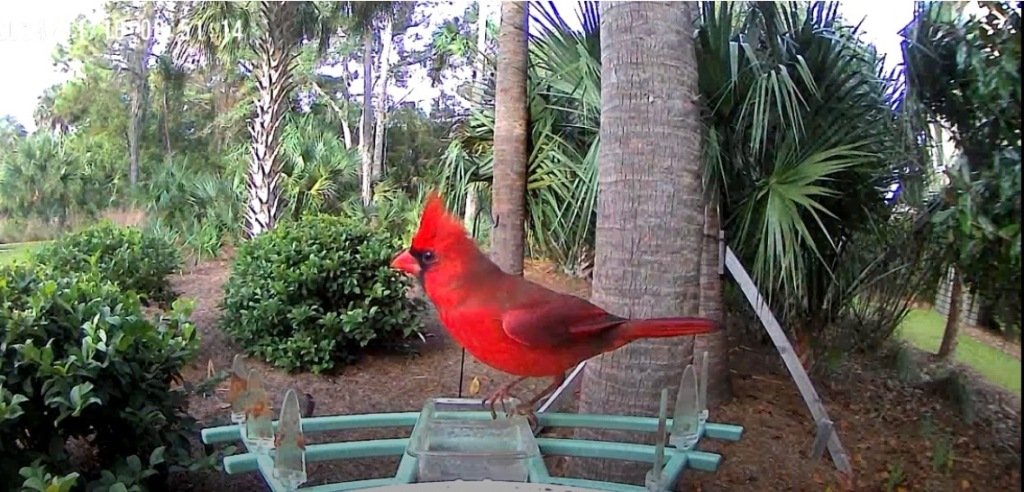Imagine you are walking along the marsh in the late fall. The Great Egrets, Wood Storks and Roseate Spoonbills are hunting for fish in the salty low tide. You are dressed in a green shirt, tan pants and a neutral colored hat to shield your face from the birds. Discreetly, moving slowly and carefully, you go unnoticed as your binoculars focus in on the wonders of the creatures around you.


What colors should a birder wear? Keep in mind that birds see colors differently than people do. Birds’ eyes are able to see more saturated colors (hues) than the human eye. Birds see color differently because they have more cones than humans, as well as pigmented oil droplets in their rods and cones. Birds not only have short, middle, and long cones like people, but they also have a UV cone which allows them to see light in a near ultraviolet range. Therefore the “colors” of a birdwatcher’s attire should blend into the surroundings to become one with the birds.

Photo by Ron Duncan
This Cooper’s Hawk is watching closely with its keen eyesight. Luckily, the photographer was dressed in neutral colors and approached the hawk slowly and carefully to capture this amazing shot.

Birds will scatter or fly away when they observe color that is strange to them. The color white is a color birds associate with danger and should not be worn by the birder. On the contrary, when the surroundings are consistent with the colors of their habitat, a birdwatcher can successfully blend in with the birds.
When choosing the colors for bird watching attire, fashion it to a game of hide and seek. Think tan, gray, green and black. Birds are distracted by colors unlike their feathers.
This male cardinal was not distracted from the backyard bird feeder camera.

Feeder Cam Photo provided by Deanna Forysthe
Colors worn by birders can also attract the birds. Many birds are attracted to colors associated with the foods they eat. Some birds are attracted to colors that are similar to their own feathers. Hummingbirds, not surprisingly, are attracted to the color red and have been known to come to humans wearing red caps or pops of red in their clothing.
The choices you make when you dress to go birdwatching can make a difference in your experience, but remember, it’s your attitude that is most important. Approach birds in their habitat slowly, gracefully, and respectfully. Now go and capture the Great Egrets and Wood Storks in the marsh today, but leave your white hat at home.
If you are looking for more detail on this topic, several of us found this article from the Kansas Ornithological Society very helpful.
Submitted by Deanna Forsythe
